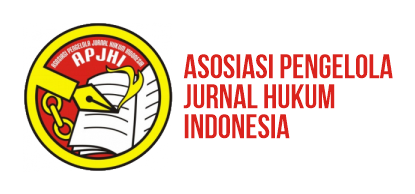Optimalisasi Peran Hakim Agung dalam Penyelesaian Perkara Kasasi dan Peninjauan Kembali
DOI:
https://doi.org/10.31078/jk1229Keywords:
Cassation, Review, Supreme Court, Constitutional CourtAbstract
This article aims to provide knowledge and understanding on the functions of the state law enforcement agencies in Indonesia. Differences of powers and functions of law enforcement agencies such as the Supreme Court, Attorney General’s Office and the Constitutional Court needs to be understood in depth. Furthermore, given the problems in all courts all over the world which is, among others, the slow settlement of cases, this article describes and analyses the role of Supreme Court Justices in resolving cassation and review cases before and after the issuance of the decree of the Chief Justice Number 119/KMA/SK/VII/2013 regarding the determination of the Day of Deliberation and Pronouncement and Number 214/KMA/SK/XII/2104 concerning Time Period for the Handling of Cases at the Supreme Court. However, when Constitutional Court pronounced Ruling Number 34/PUU-XI/2013 a problem arises in which the products of the two state judicial bodies seem to be inconsistent, especially in the framework for the resolution of criminal cases. On the one hand, the Supreme Court wants the creation of a judicial process that is simple, speedy, and low cost through the strengthening of the two products above, but on the other hand the Constitutional Court through its award extend the time span of litigation process for the settlement of review cases which can be done repeatedly. Thus, in order to provide legal certainty, the Supreme Court issued Supreme Court Circular Number 7 Year 2014 which essentially affirms that the petition for review in criminal cases is limited only one time based on other legal basis namely Judicial Authority Act and Supreme Court Act.
References
Dory Reiling, Technology for Justice: How Information and Technology Can Support Judicial Reform, Leiden: University Press.
Dudu Duswara Machmudin, 2013, Pengantar Ilmu Hukum Sebuah Sketsa, Bandung: Penerbit Refika Aditama, Cetakan Kelima.
-----------------, 2013, Kedudukan dan Peran Pengadilan Tindak Pidana Korupsi dalam Sistem Peradilan Pidana di Indonesia, Jakarta: DSP Press, Cetakan Kedua.
Hasbie a-Shiddieqie, 1970, Filsafat Hukum Islam, Jakarta: Penerbit Bulan Bintang.
Hatta Ali, M., Revitalisasi Fungsi Mahkamah Agung Melalui Reformasi Sistemik dan Berkelanjutan, 2015, Surabaya: Penerbit Universitas Airlangga.
Lili Rasjidi dan Qtje Salman Soemadiningrat, 2003, Buku Panduan Penyusunan Tesis dan Disertasi, Bandung: Program Pascasarjana Unicersitas Padjadjaran.
Mahkamah Agung Republik Indonesia, 2105, Bunga Rampai Kebijakan Mahkamah Agung Republik Indonesia Tahun 2012 sampai dengan 2014, Jakarta: Penerbit Mahkamah Agung.
-----------------, 2014, Laporan Mahkamah Agung Republik Indonesia Tahun 2014. Jakarta: Penerbit Mahkamah Agung.
Pusat Bahasa Departemen Pendidikan Nasional, 2006, Kamus Besar Bahasa Indonesia, Jakarta: Penerbit Balai Pustaka.
Rifki S. Assegaf dan Josi Katarina, 2005, Membuka Ketertutupan Pengadilan, Jakarta: Penerbit LeIP.
Roni Hanitijo Soemitro, 1983, Metode Penelitian Hukum, Jakarta: Penerbit Ghalia.
Shanty Dwi Kartika, 2014, “Peninjauan Kembali Lebih dari Satu Kali antara Keadilan dan Kepastian Hukum dalam Info Singkat Hukum”, Vol. VI, No. 06/II/P3DI/Maret 2014
Yahya Harahap,M., 2003, Pembahasan Permasalahan dan Penerapan KUHAP, Pemeriksaan Sidang Pengadilan Banding, Kasasi, dan Peninjauan Kembali, Jakarta: Penerbit Sinar Grafika, Cetakan Kelima.
Downloads
Published
How to Cite
Issue
Section
License
Authors who publish with this journal agree to the following terms:
- Copyright of the published articles will be transferred to the journal as the publisher of the manuscripts. Therefore, the author confirms that the copyright has been managed by the publisher.
- The publisher of Jurnal Konstitusi is The Registrar and Secretariat General of the Constitutional Court of the Republic of Indonesia.
- The copyright follows Creative Commons Attribution-NonCommercial-ShareAlike 4.0 International License: This license allows reusers to distribute, remix, adapt, and build upon the material in any medium or format for noncommercial purposes only, and only so long as attribution is given to the creator. If you remix, adapt, or build upon the material, you must license the modified material under identical terms.














